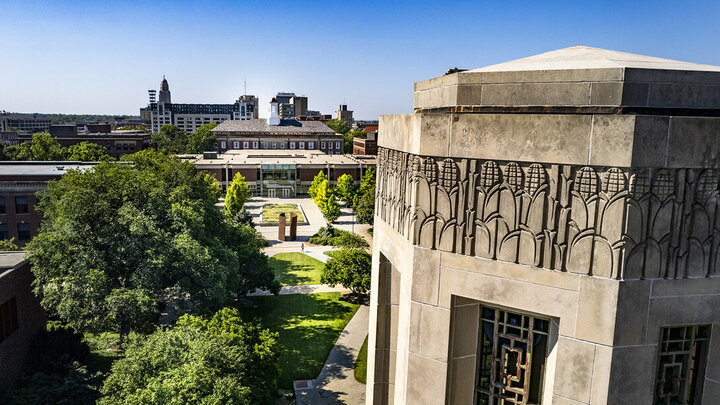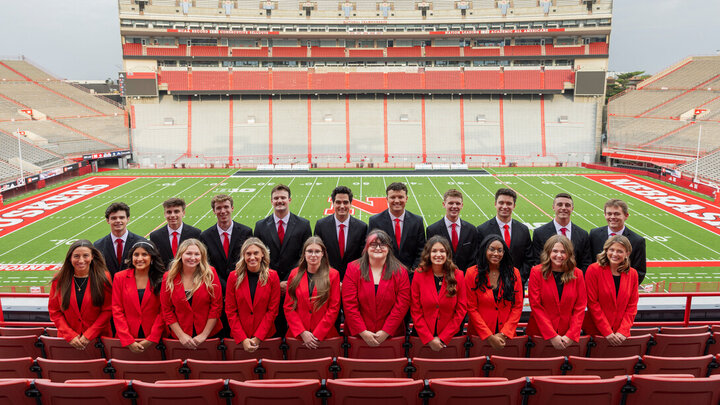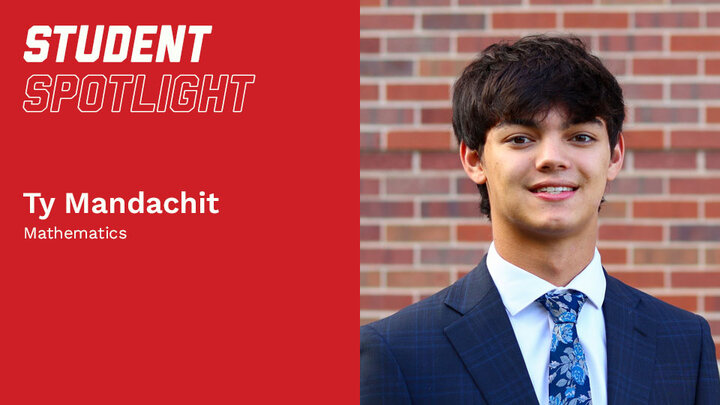For 11 years, the UNL Department of Mathematics has had a prominent program in mathematical biology, with strength in the areas of mathematical ecology, mathematical neuroscience and, most recently, bioinformatics. The department has significant interdisciplinary relationships, extending to East Campus (Fisheries and Wildlife), the School of Biological Sciences, the University of Nebraska Medical Center and the University of Nebraska at Omaha.
The core faculty members in ecology include professors Bo Deng, Steve Dunbar, Glenn Ledder, David Logan, Richard Rebarber and Brigitte Tenhumberg (joint appointment with the School of Biological Sciences). The core faculty members in neuroscience are professors Carina Curto, Deng and Vladimir Itskov, as well as postdocs Chad Giusti and Alan Veliz-Cuba.
This past year the department added tenure-track faculty member Dr. Yu Jin, a former postdoctoral student at the University of Alberta, who works to quantify aspects of fish populations in streams. The biology department, with strong input from mathematics, hired Dr. John DeLong, a post-doc from Yale, who works in quantifying allometric properties of growth in animal and plant species.
Applied mathematics is mathematics motivated by applications in other fields, typically science, engineering or economics. Mathematical biology aims at the mathematical representation, treatment and modeling of biological processes, through applied mathematics.
"Some applied mathematicians use applications as a springboard for proving theorems, while some use mathematics to answer questions in the other fields," Rebarber said.
The first significant math research in mathematical biology dates from the 1930s, but it got a jump-start in the 1970s, and now is a well-established area.
Mathematical neuroscience is a field of research that uses mathematics to develop models, theory, and data analysis tools in order to address questions arising from neuroscience, such as: How do neurons work? How do the interactions between neurons give rise to neural network activity? How does this activity relate to information processing in the brain? What are the neural underpinnings of learning and memory? What do experimental observations allow us to say about the brain? These are all questions being actively pursued by mathematical neuroscientists, often in close collaboration with experimentalists, said Carina Curto.
Early models of neural networks date back as early as the 1930s, but it can be argued that mathematical neuroscience didn't really take off until the late 1950s, with the Hodgkin-Huxley model. Many physicists work in this field, though they would refer to it as "theoretical neuroscience," in analogy with "theoretical physics," Curto added.
"We have found that by trying to find – and develop – mathematical tools to answer questions in neuroscience, rich and interesting connections to unexpected areas of mathematics arise. This includes algebra, topology, and discrete math, in addition to more traditionally applied areas of mathematics, such as probability and differential equations. Biology is increasingly doing for math what physics has done very well in the past – to be a source of problems and ideas, to highlight natural connections between different areas of math, and to motivate the development of new mathematics based on the promise of scientific application," said Curto.
Curto and Itskov co-head the Mathematical Neuroscience Lab, with postdocs Giusti and Veliz-Cuba. The lab uses and develops mathematical and computational approaches to tackle questions in systems (network-level) neuroscience. They study neural coding and neuronal networks using novel algebraic and geometric methods. Curto and Itskov are particularly interested in understanding how networks of neurons in the brain encode information about external "stimuli," including space and time coding in the hippocampus. Their theoretical work is often paired with the analysis of electrophysiological data, another integral component of the research.
Over the past three years, Curto and Itskov's research has been funded by four single-investigator NSF grants, as well as the Alfred P. Sloan and Woodrow Wilson Foundations.
"I didn't really start working in my current field until after I completed my Ph.D.," said Curto, who majored in physics as an undergraduate. "Nevertheless, all the math and physics I learned has proven quite useful – sometimes directly, but more often due to the rigorous training and problem-solving skills these fields have given me."
Mathematical ecology is an area of biology that has had a long history with mathematical analysis. "The genesis of the type of 'structured' population models I study was probably started in the mid-1940s with Matrix modeling, although there were predecessors as early as 1895," Rebarber said.
In mathematical ecology, populations are often modeled and analyzed using mathematics such as calculus, differential equations and matrix theory, and more advanced techniques from dynamical systems, partial differential equations and functional analysis. In such models, the population is represented by a function, and the way the population evolves is described by an equation. This equation is used to describe how the population got to where it was, and predict what the population will do, Rebarber explained.
"I like best when I can develop new mathematical techniques to shed light on ecological questions," Rebarber said. "For endangered species, we sometimes study how to change the system so that the model predicts better population growth. For invasive species, we sometimes study how to change the system so that the model predicts better population decay."
Mathematical biology also has been well represented in the department's REU program, led by Rebarber with the help of student mentor Glenn Ledder. Ledder's current research is in plant life history theory, and his most recent REU group contributed to his project involving the identification of connections between a plant's environmental niche and its life history strategy. He also is collaborating with an engineering professor at Ohio State University and three applied mathematicians in England to develop a mathematical model to describe a process that is being used to concentrate stem cells in artificial tissue.
"Ultimately, this work will be helpful in the design of biomedical implants that need a network of blood flow, such as heart valves," Ledder said.
Ledder has been engaged with the broad community of mathematics faculty who are developing new curricula for biology majors, resulting in a forthcoming MAA Notes volume of contributed articles called "Undergraduate Mathematics for the Life Sciences: Models, Processes, and Directions." One of the 26 articles in this volume is based on Ledder’s pedagogical work on mathematics for biology, which is being published in 2013 as the book "Mathematics for the Life Sciences: Calculus, Modeling, Probability, and Dynamical Systems." Two other articles, co-authored with Tenhumberg, are about the Research Skills in Theoretical Ecology summer course that was part of the RUTE program.
Faculty member David Logan’s research in mathematical ecology includes work on nutrient cycling, physiologically-structured population dynamics, the effects of global climate change on ecosystems and food webs, and insect eco-physiology.
Furthering the department's more recent work in bioinformatics, Deng, Dunbar and Hartke (as part of an interdisciplinary team) received seed funding in 2011 for the project, "Analysis of Signal Transducing Proteins Toward Biomedical Application," from the UNL Life Sciences Initiative’s inaugural competitive grants program. Jointly funded by the Institute of Agriculture and Natural Resources and the Office of Research and Economic Development, the grants support initial research so teams can gather the preliminary data needed to compete more successfully for external funding. The main tools Deng uses in his research activities include information and communication theory, circuitry, differential equations, qualitative theory of dynamical systems, and applied nonlinear analysis.
The UNL Life Sciences Initiative started in 2010 at the encouragement of Chancellor Harvey Perlman. The interdisciplinary collaboration promoted by the Department of Mathematics truly supports this university-wide mission.
"When in doubt, learn more math. It does for the brain what veggies and exercise do for the body, and prepares you for more possibilities in life than you could possibly anticipate," Curto said.




